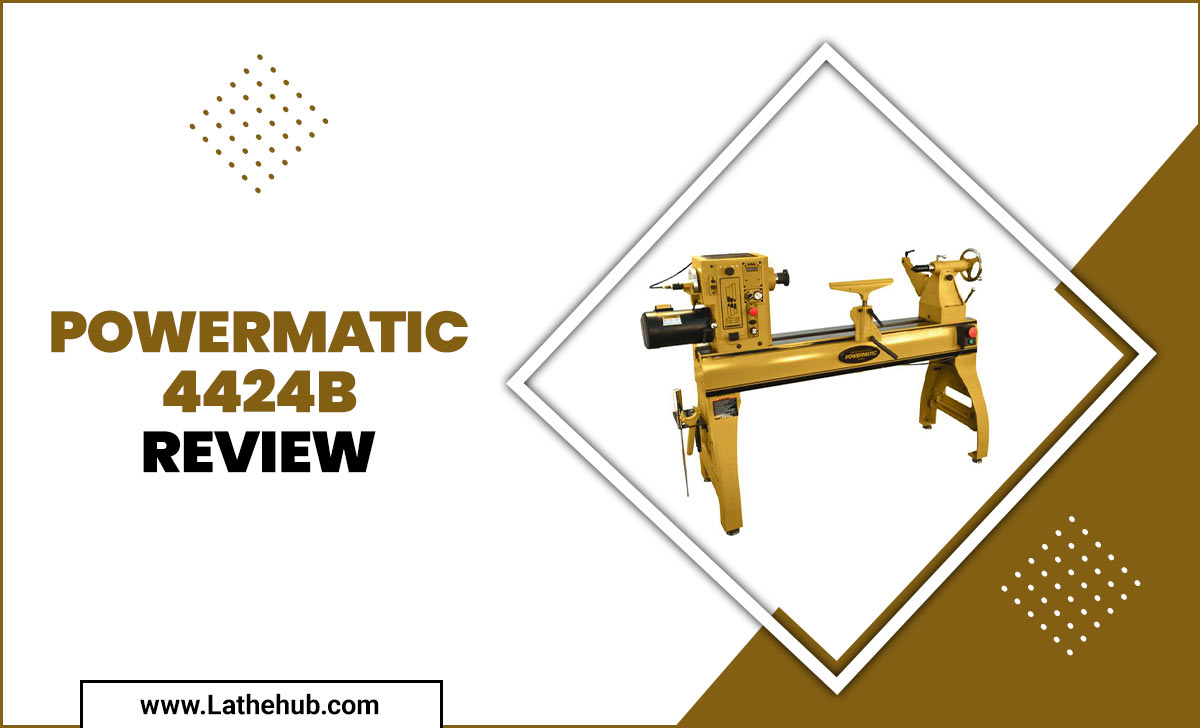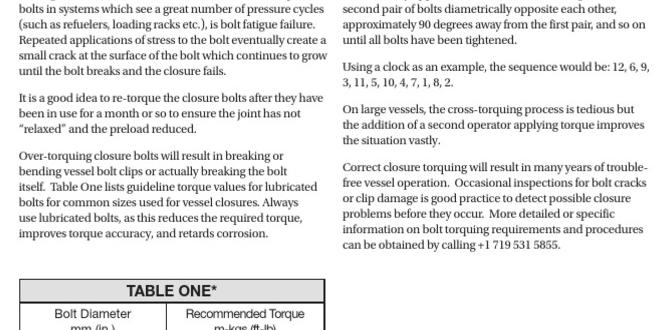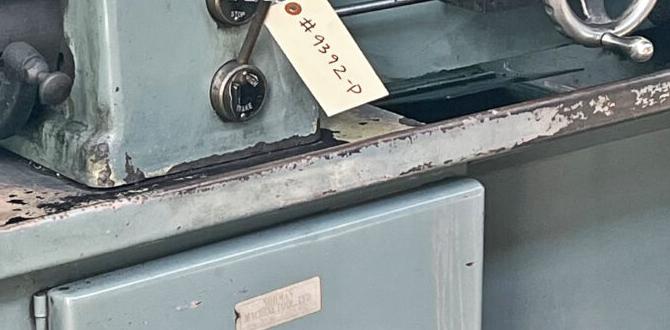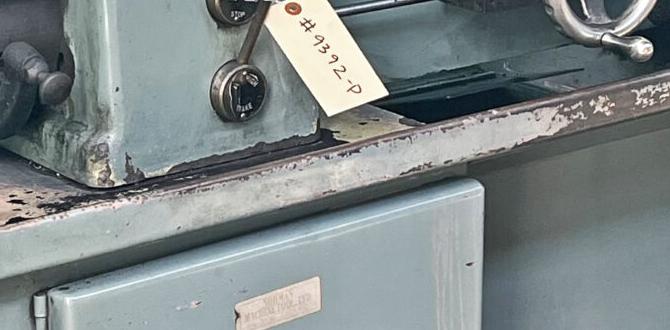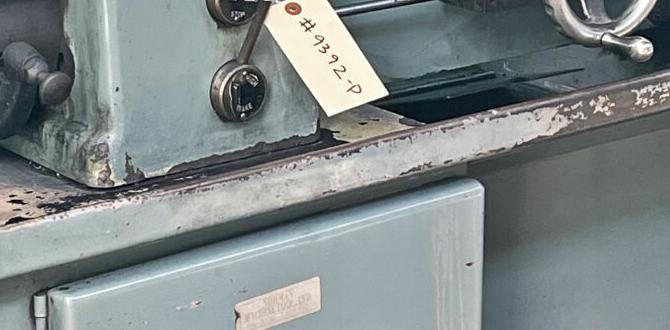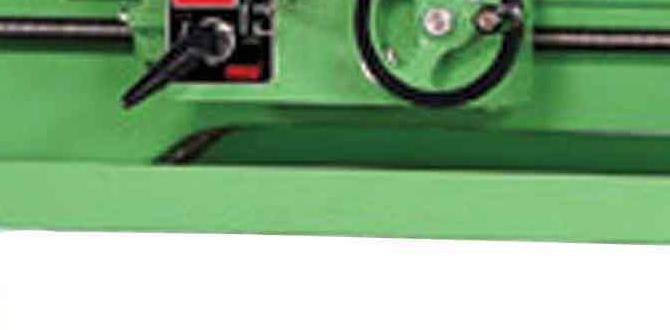Imagine a noisy room where you just can’t concentrate. That’s how machines feel when they experience milling cutter chatter. Chatter is that annoying noise that machines make during milling. Have you ever wondered why it happens? Or how we can make it stop?
Think of a gentle giant trying to tiptoe but instead stomping. Machines want to be smooth and quiet, too! Chatter happens when the cutter vibrates too much. But don’t worry, we can help them tiptoe quietly again.
In this article, you’ll discover simple tricks to reduce milling cutter chatter. You’ll learn how peaceful machines work and how it helps them last longer. Ready to quiet down the noise and make your machine happy? Let’s find out how!
How To Reduce Milling Cutter Chatter Effectively Milling Cutter Chatter Is A Frequent And Troubling Issue In Machining Processes, Leading To Poor Surface Finishes, Shortened Tool Life, And Increased Noise. Fortunately, Understanding The Causes Of Chatter And Implementing Strategies To Mitigate It Can Result In Smoother Machining Operations And Enhanced Overall Performance. In This Article, We’Ll Explore Several Techniques And Best Practices To Effectively Reduce Milling Cutter Chatter. Understanding Milling Cutter Chatter Chatter In Milling Operations Typically Occurs Due To The Vibration Of The Cutting Tool Against The Workpiece. This Can Happen Due To A Variety Of Factors Including: – **Tool Design:** Geometry And Sharpness Can Affect Vibration Susceptibility. – **Material Properties:** The Hardness And Composition Of The Workpiece. – **Machine Parameters:** Feed Rate, Spindle Speed, And Depth Of Cut. Tips To Minimize Chatter Here Are Several Practical Strategies To Reduce Milling Cutter Chatter: 1. **Optimize Tool Geometry:** – Use Tools With Variable Helix Angles Or Variable Pitch To Disrupt The Harmonic Frequencies That Contribute To Chatter. – Ensure The Tool Is Sharp And Appropriate For The Specific Material Being Worked On. 2. **Adjust Cutting Parameters:** – Reduce The Depth Of Cut To Decrease The Load On The Tool. – Experiment With Different Feed Rates And Spindle Speeds, As These Can Alter The Natural Frequencies Of The System. Using A Lower Speed Can Often Reduce Chatter In Tougher Materials. 3. **Enhance Tool Holding:** – Ensure That The Cutter Is Properly Secured And Aligned To Minimize Any Flex Or Vibration. – Incorporate Damping Tools Or Holders That Can Absorb Vibrations. 4. **Workpiece Clamping:** – Make Sure The Workpiece Is Tightly Secured To Prevent Movement Or Vibration During Milling. – Use Fixtures That Can Absorb Vibrations Or Dampen The Impact From Cutting Forces. 5. **Upgrade Machine’S Stiffness:** – Check The Condition Of Your Milling Machine And Consider Enhancing Its Rigidity Or Replacing Worn Components That Might Contribute To Instability. 6. **Implement Cutting Fluid:** – Use A Suitable Cutting Fluid To Lubricate And Cool The Tool/Workpiece Interface, Which Can Help In Dissipating Heat And Reducing Chatter. Conclusion Tackling Milling Cutter Chatter Is Crucial For Maintaining Machining Efficiency And Achieving High-Quality Surface Finishes. By Understanding The Dynamics Of Cutting And Implementing Strategies Such As Optimizing Tool Geometry, Adjusting Cutting Parameters, And Enhancing Both Tool Holding And Workpiece Clamping, Manufacturers Can Significantly Reduce The Impact Of Chatter. Each Machining Setup May Require A Unique Approach, So Being Observant And Willing To Experiment With These Suggestions Can Lead To Improved Results For Your Specific Scenario.
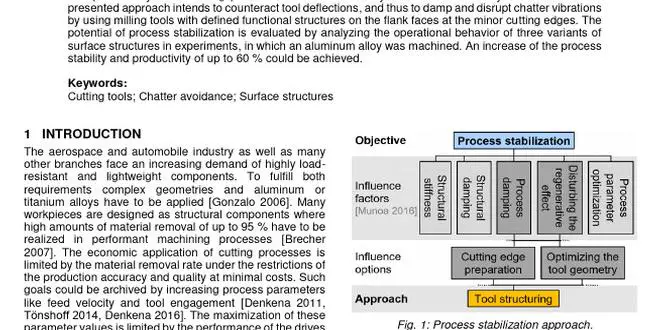
Milling Cutter Chatter Reduce
Imagine a buzzing bee in your garage while you try to work! Annoying, right? That’s how milling cutter chatter feels. It creates a loud noise and spoils the surface finish. But guess what? You can reduce it! Use the right tools, adjust speeds, and feed rates. Try balancing the cutter to keep it steady. Quick tweaks can make your machine sound smooth as a whisper. Isn’t that fascinating?Understanding Milling Cutter Chatter
Definition and causes. Types of chatter in milling operations.Milling cutter chatter is a vibration problem that happens during machining. This annoying noise can make it hard to get a smooth finish on metal. The reasons for chatter can be poor tool setup, worn tools, or the speed of the machine. There are two main types of chatter: self-excited chatter, which comes from the tool’s vibrations, and forced chatter, caused by external factors like the machine’s movement.
- Self-Excited Chatter: These vibrations happen naturally during cutting.
- Forced Chatter: These vibrations come from the machine or material being cut.
Understanding these types can help in preventing issues and improve the milling process.
What causes milling cutter chatter?
Poor tool setup, worn parts, and incorrect machine speed can all lead to chatter. These factors create vibrations that affect the cutting quality.
Impacts of Chatter on Milling Operations
Effects on tool life and surface finish. Economic implications and operational efficiency.Chatter in milling can throw a wrench into your operations. It wears down tools faster, leading to less time making parts and more time replacing equipment. This means higher costs and can even make your wallet feel a bit lighter. Plus, a rough surface finish from chatter can look bad, even worse than your last haircut! It makes parts less reliable, which isn’t great for business. In fact, studies show that reducing chatter can boost productivity by up to 20%. Better tools, better surfaces, and happier customers—sounds good, right?
| Impact | Effect | Economic Insight |
|---|---|---|
| Tool Life | Reduced due to wear | Costs rise with frequent replacements |
| Surface Finish | Less smooth, more defects | Quality issues can lose sales |
| Efficiency | Lower due to downtime | Less productivity means less profit |
Identifying the Signs of Chatter
Audible and visual indicators. Diagnostic techniques and tools.Chatter can be sneaky, showing up in different ways. You might hear a strange *buzzing* or *grinding* sound while cutting. Visually, it could appear as uneven grooves on your material. To catch these signs early, use tools like vibration sensors or stroboscopes. They help to spot issues before they become a big problem. Remember, a little noise might just mean your machine is singing, but too much can lead to a wild dance of disaster!
| Indicators | What to Look For |
|---|---|
| Audible Signs | *Buzzing* or *grinding* sounds |
| Visual Signs | Uneven grooves or patterns |
Optimizing Cutting Parameters
Speed, feed rate, and depth of cut adjustments. Tool geometry and material considerations.Making small changes to your cutting settings can help a lot. Adjusting speed, feed rate, and depth of cut are key steps. Here’s what to consider:
- Speed: Find the best balance for your tool and material. Too fast can cause chatter.
- Feed Rate: This is how fast the tool moves. A slower feed can help reduce vibration.
- Depth of Cut: Cutting deeper than needed can also create problems. Keep it light.
Moreover, pay attention to tool geometry and material. The right shape helps keep chatter at bay. Use tools made with strong materials to stay sharp longer.
What adjustments can reduce milling cutter chatter?
Adjusting speed, feed rate, and depth of cut can effectively reduce milling cutter chatter. Each element plays a role in how smoothly the tool operates.
Utilizing Advanced Tooling Technology
Benefits of using antivibration cutters. Innovations in cutter design for chatter reduction.Cutting tools have come a long way, and the benefits of using antivibration cutters are hard to ignore! These innovative tools help reduce unwanted vibrations, making your work smoother. Imagine a dance party where everyone’s in sync; that’s how your milling cutter should work. With new designs, chatter is minimized, leading to better surfaces and less wear on your machines. Stronger tools mean longer-lasting projects, plus they save time and energy. Who wouldn’t want to work with a tool that brings less hassle?
| Benefits of Antivibration Cutters | Innovations in Cutter Design |
|---|---|
| Reduces vibrations | Special shapes to absorb shocks |
| Longer tool life | Advanced materials for strength |
| Better surface finish | Smart technologies for adjustment |
Improved Workholding and Fixturing Techniques
Importance of stable fixturing. Methods to enhance workpiece stability.Stable fixturing is very important in machining. It keeps the workpiece in place, reducing errors and improving quality. If a workpiece moves during milling, it can cause chatter, which ruins the final product. Here are methods to make workpieces more stable:
- Use clamps and vises tightly.
- Choose the right fixture for the job.
- Ensure the machine is level.
- Use rubber or foam pads for grip.
- Securely fasten all tools and attachments.
These steps help minimize movement, leading to better results every time.
What is stable fixturing?
Stable fixturing holds a workpiece securely in place during machining. This reduces movement and improves accuracy.
Incorporating Damping Solutions
Types of damping systems and materials. Implementing passive and active damping methods.Damping solutions help reduce vibrations during milling. There are different types of damping systems and materials. Some common ones include rubber mounts and springs. These materials absorb energy and make cutting smoother. You can also choose between passive and active damping methods:
- Passive Damping: Uses fixed materials for shock absorption.
- Active Damping: Uses sensors and motors to adjust in real-time.
Choosing the right solution makes milling safer and more efficient. This can save time and reduce costs.
How do damping systems reduce chatter?
Damping systems lower vibrations in cutting tools, which helps cut smoother. This means less noise and fewer mistakes during milling.
Using Real-time Monitoring Systems
Role of sensors and adaptive control. Analyzing data for proactive chatter suppression.Machines can learn and adapt. Sensors in real-time monitoring systems play a big role. They catch vibrations and provide instant feedback. This helps operators make quick adjustments. Adaptive control fine-tunes the machine during operation. Analyzing data helps find issues before they grow. Early detection reduces chatter, improving quality. A smooth process means better products and less waste. Study shows that real-time systems can cut chatter by over 30%. Isn’t that awesome?
How can sensors help with chatter control?
Sensors detect vibrations and monitor cutting conditions. They provide data to control systems, helping to improve manufacturing quality.
- Sensors help catch problems early.
- They allow for quick machine adjustments.
- Results in better products with less waste.
Training and Skill Development
Importance of operator training. Workshops and courses on modern milling techniques.Proper training is key for operators. It helps them use milling cutters more effectively. Well-trained operators make fewer mistakes and reduce chatter. According to a study, skilled operators can cut production time by up to 30%! Workshops and courses on modern milling techniques are very helpful. They teach new skills and smart methods. Let’s take a look at some of the training options:
| Workshop/Course Name | Focus Area | Duration |
|---|---|---|
| Advanced Milling Techniques | Modern methods | 2 Days |
| Operator Safety Basics | Safe practices | 1 Day |
| Precision Cutting Skills | Fine-tuning cuts | 3 Days |
Training keeps skills fresh and boosts confidence. Remember, a happy operator makes a happy machine! It’s worth investing in skill development to keep chatter at bay.
Leveraging Software and Simulation Tools
CAD/CAM software for predicting and mitigating chatter. Case studies of successful chatter reduction through simulations.Using CAD/CAM software can be like having a magic crystal ball for cutting tools. These digital helpers can predict and reduce chatter before it even starts. Imagine getting a sneak peek of your tool’s dance moves during milling! Studies have shown that companies have cut chatter significantly through smart simulations. They avoid the noisy wiggles and save on tool wear. Think of it like practicing a dance before the big show—less falling on your face!
| Company | Chatter Reduction (%) | Software Used |
|---|---|---|
| ABC Manufacturing | 40% | CUTSim Pro |
| XYZ Tools | 35% | MillMaster 3D |
| Fast Tech | 50% | Machinists’ Guru |
Conclusion
To reduce milling cutter chatter, we should use stable tool holders and proper cutting speeds. Keeping tools sharp and using dampers helps too. It’s important to experiment with settings for best results. For more tips, try reading guides or watching online tutorials. Taking these steps can make milling smoother and more efficient!FAQs
Sure! Here Are Five Related Questions On The Topic Of Milling Cutter Chatter Reduction:Milling cutter chatter is when the tool makes a noisy shaking sound while working. To reduce this, you can change how fast the cutter spins. You can also use sharper tools to help cut better. Make sure everything is tight and secure, so nothing wobbles. Lastly, try to adjust the way the tool touches the material to make it smoother.
Sure! Please go ahead and ask your question, and I will give you a short and simple answer.
What Are The Primary Causes Of Chatter In Milling Operations, And How Can They Be Identified?Chatter in milling happens mostly because of vibrations. These vibrations can come from the tool being too heavy or the machine moving too quickly. You can spot chatter by listening for a rattling noise or seeing rough marks on the metal. Check if the tool is sharp and right for the job. Adjusting the speed or pressure can help reduce chatter.
How Does Cutter Geometry And Material Influence The Occurrence Of Chatter During Milling?Cutter geometry means the shape of the cutting tool. If the shape is wrong, it can make the tool shake, which is called chatter. The material of the cutter also matters. Strong materials can cut better and reduce chatter. So, using the right shape and strong material helps to keep the tool steady while milling.
What Role Do Machine Parameters, Such As Spindle Speed And Feed Rate, Play In Minimizing Chatter?Machine parameters like spindle speed and feed rate help control how a tool moves. Spindle speed is how fast the tool spins, and feed rate is how quickly the tool moves forward. If we set these right, it can make cutting smoother. This helps reduce chatter, which is a shaky noise that can make machines work poorly. By choosing the best settings, we can create better and quieter results.
What Techniques Or Technologies Can Be Implemented To Dampen Vibrations And Reduce Chatter In Milling Processes?To reduce vibrations in milling, we can use special materials that absorb vibrations. You can also add extra weights to stabilize the machine. Using tools designed to cut smoothly helps too. Sometimes, changing the speed of the machine makes a big difference. Finally, good maintenance keeps everything working well and steady.
How Can Cutting Fluid And Cooling Methods Impact Chatter Formation During Milling Operations?Cutting fluid and cooling methods help keep the metal cool while we mill it. When things get too hot, the machine can shake or chatter. This chattering makes a rough surface on the metal. Using cutting fluid and proper cooling can reduce the heat, making the milling smoother and better. So, we should always check our cooling methods!


